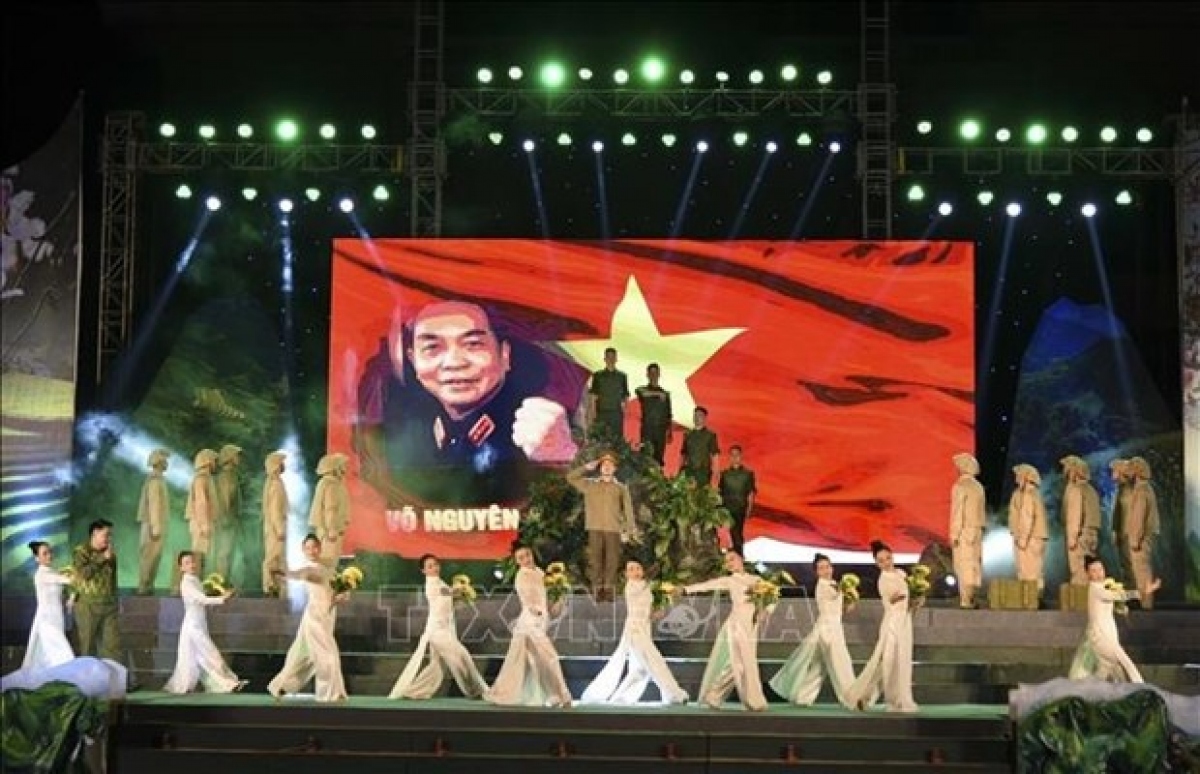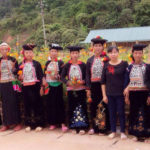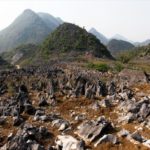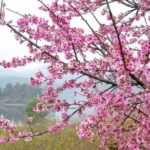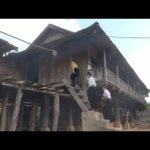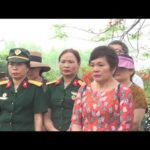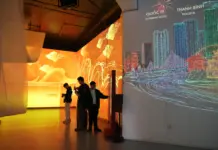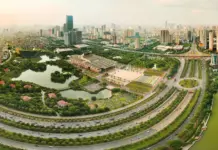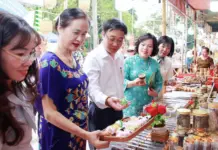The programme, performed by nearly one hundred actors, actresses, and singers from Dien Bien province, consisted of two parts: Glorious Memories and Dien Bien in a New Day. Unforgettable songs, such as “Ho keo phao” (Artillery Pulling Chant), “Qua mien Tay Bac” (Through the West Region), “Tren doi Him Lam” (On Him Lam Hill), and “Giai phong Dien Bien” (Liberation of Dien Bien), were performed in the show.
The event celebrating the 1954 Dien Bien Phu Victory was a testament to the many factors that made it possible. The Party’s comprehensive resistance policy, which covered all aspects of military, politics, economy, trade, culture, education, and diplomacy, was the decisive factor in achieving this triumph. This policy created a synergy of strength, ultimately resulting in a victory that “resounded throughout the five continents and was world-shaking.”
The second part showed Dien Bien in the period of integration and development. The once-famed battlefield has now been transformed into a bustling, vibrant city. With a population of over 140,000, it is a bustling hub of activity and growth. The city is home to a variety of businesses, ranging from trade to services, and is also a major tourist destination, with its plethora of cultural attractions and natural beauty. From the bustling markets to the serene temples, Dien Bien has something to offer everyone. With its rich history and exciting future, Dien Bien is a bustling metropolis that truly stands as an example of the power of integration and development.
The art show brought viewers meaningful moments, reminding them of the revolutionary history and arousing their patriotic spirit. It was especially an opportunity to remember and pay tribute to the heroic martyrs who laid down their lives on this land.
Tua Chua Karst Plateau
Tua Chua Karst Plateau in Tua Chua District of northwestern Dien Bien Province is located at a height of 1,500m above sea level. There are various rugged rocky plates placed on one another and shaped into citadels and mounts with different names such as To Cu Nhe, Chung Khoa, Chung Si Seng, Vang Long, and others. Such a natural magnificent landscape has attracted many visitors, both domestic and foreign, to the northwestern region of Vietnam.

